Monte Albán and Its Plants
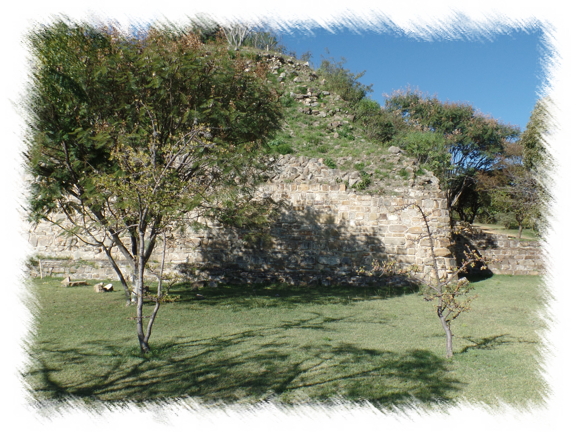 | ||||
| The botanical knowledge of the plants used by the different groups that have inhabited the Central Valleys of Oaxaca. The area that includes Monte Albán has an irregular surface covering 2078 ha, oriented from southeast to northwest. The urban grid of the city of Oaxaca, grew in a disorderly manner, invading and absorbing agricultural lands. This invasion continues and does not respect the areas of exclusion or protected natural areas, as is the case of the hillsides of Monte Albán. The transition to agriculture began around 9500-8500 a.C. in the hilly country of southeastern Turkey, west of Iran and the Levant. It started slowly and in a restricted geographical area. Wheat and goats were domesticated around 9000 BC; peas and lentils around 8000 BC; the olive trees around 5000 BC; the horses around 4000 a.C. and the grapevine 3500 A.C. Some animals and plants such as camels and cashews were domesticated even later but by 3500, the main wave of domestication was over. Even today, with all our advanced technology more than 90 percent of the calories, which feed humanity, come from the handful of plants that our ancestors domesticated between 9000 and 3500 BC: wheat, rice, corn, potatoes, millet, barley. In the last two thousand years no animal or plant worthy of mention has been domesticated. If our mind is that of hunter-gatherers, our kitchen is that of the old farmers. The South Americans discovered how they grow potatoes and raise llamas, ignorant of what happened in Mexico and Levant. The Chinese domesticated rice, millet and pigs. The first gardeners in North America were the ones who got tired of registering the undergrowth in search of edible courgettes and decided to grow pumpkins. The inhabitants of New Guinea domesticated sugarcane and bananas, while the first farmers in West Africa produced African millet, African rice, sorghum and wheat according to their needs Most plants and animals can not be domesticated. Humans could extract delicious truffles from the ground and bring down woolly mammoths, but taming these species was beyond their means; the mushrooms were too elusive and the gigantic beasts too fierce. Of the thousands of species that our ancestors hunted and harvested, only a few were suitable candidates for domestication. These few species lived in specific places, and that is where agricultural revolutions took place. Growing wheat provided much more food per unit of territory, and therefore allowed humans to multiply exponentially. Towards 8,500 A.C, when wild plants had given way to wheat plants, there were villages of more than 1000 people, who suffered much more from diseases and malnutrition. The agricultural revolution is one of the most controversial events in history. Some supporters proclaim that it put humanity on the path of prosperity and progress. Others argue it created centers of disease, famine, and early death. The hunter-gatherers gave little importance to the future because they lived precariously and could only keep food or accumulate possessions with difficulty. The agricultural revolution gave the future much more importance than it had before. Farmers who always have the future in mind work at their service. The agricultural economy was based on a seasonal production cycle, which included long months of cultivation followed by short and intense harvest periods. Since the appearance of agriculture, concerns about the future have become the main actors of the human mind. The farmers worried about the future not only because they had even more reason to worry, but because they could do something about it: they could clear another field, dig another irrigation ditch, plant more plants. | ||||
DECIDUOUS FORESTA decisuous forest is a vegetable community dominated by small trees that lose their leaves during the dry season of the year. They are typical of warm climates with little rain. They have a unique diversity with a large number of endemic species. They are located in very fragile areas and in climatic conditions that favor desertification.It occupies approximately 11.7% (226, 898 km) of the national surface. It is distributed in the slope of the Pacific of Mexico, from the south of Sonora and southwest of Chihuahua to Chiapas and continues to Central America. There are small portions in the southern tip of the Baja California Peninsula and in the northern Yucatan peninsula. They are usually found from sea level to 1,500 although occasionally it can reach up to 1,900 meters above sea level in areas of great dryness. The low deciduous forest houses a large part of the country's floristic biodiversity, in which the Tepehuaje (Lisiloma spp), the Cazahuate (Ipomoea spp), the Colorín (Erithryna spp) and the Pochote (Ceiba spp) stand out. Another group characteristic of the deciduous forests are cuajiotes, copales, mulatos sticks, that are species that belong to the Bursera sort. | ||||
PLANTSThe Plantae kingdom includes those eukaryotic, immobile and autotrophic organisms called plants. According to a definition of the Royal Spanish Academy, a plant is an "organic being that grows and lives, but does not move from place by voluntary impulse". The number of plants on earth is very extensive, since it not only covers those that we see with the naked eye, but also very small forms. They are an essential element of life because they generate the oxygen that other organisms need and are primary producers in almost all ecosystems. | ||||
HUAJEGenus: Leucaena esculenta Benth (huaje or red gourd, oaxin chichiltic, yaga-la) Family: Leguminosae | ||||
|
It is a species of arboreal plant of the sort Leucaena pertaining to the family of Legumes or Fabáceas. It is originally from Mexico where it is found mostly in the southern states, such as Guerrero, Morelos, Oaxaca and Chiapas, but has been introduced from Central America to the rest of the world. Deciduous, the fall of its leaves begins in January and extends until April. The flowering lasts for 7 months and occurs from July to January. The young fruits are presented from November, although their maturity is reached from December to April. The Name of the City and the State of Oaxaca has its origin in this tree. It grows at an average altitude of 850 above sea level (minimum 600 and maximum 2,100). The seeds and leaf shoots are widely used in human nutrition, the fruits are marketed as fresh legumes. | 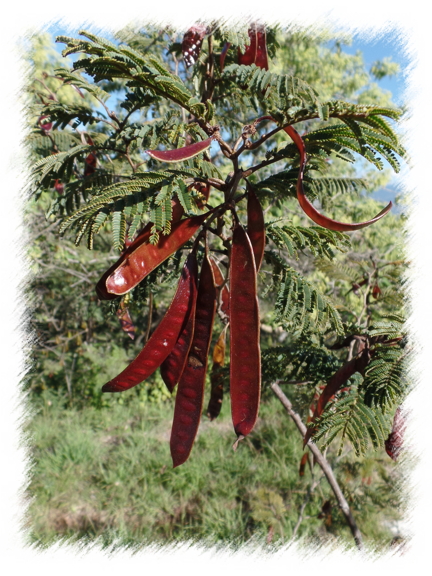 | |||
| Uses: It is considered a polyvalent species because of this tree different products are obtained: wood, cellulose, cardboard, firewood is also used for soil improvement and as shade. Leucaena leucocephala (Huaxim) Guaje, guaje blanco, guaje verde. | ||||
| | ||||
ACACIA ANGUSTISSIMA | ||||
| Family: Leguminosae Shrub or small tree 2 to 5 m tall, branches without thorns, with fine hair. Leaves alternate, bipinnate, 8 to 10 cm long, flowers gathered in axillary or terminal racemes; the flowers are small, short pedicelled, ovate seeds (with an egg shape), compressed in a brown color of 3 mm in length. Uses: The bark was used for a long time in the tanning of skins, although currently it is not used much in tanneries. It is also used to induce the fermentation of the tepache. | 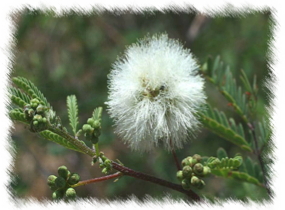 | |||
| | ||||
HUIZACHE ACACIA FARNESIANA | ||||
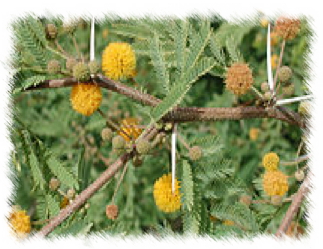
| Family: Leguminosae Small shrub up to 6 m. which branches from the base, evergreen or sub-deciduous branches with very large and white thorns up to 4 cm long arranged in pairs, rounded crown. Flowers in yellow heads, originating in the axils of the thorns, solitary or in groups of 2 to 3. Very fragrant, 5 mm long; green calyx, yellowish or greenish corolla, 2.3 mm long. Smooth bark when young, fissured when old; the wood recently contains a marked smell and taste of garlic. It flowers almost all the year round, flowers from 2 to 2.5 mm long with numerous yellow stamens, arranged in heads of 8 to 10 mm in diameter. | |||
ACACIA PENNATULA | ||||
| Family: Leguminosae Bush or evergreen tree, small 3 to 6 m tall. Grayish-brown bark, pale yellow external wood, pubescent branches with thorns arranged in pairs, short and resistant. Uses: Given the evergreen character of this tree, it is used as a "shadow tree" or shade tree. Its wood is very resistant, which is why it is used to make heads and handles of plows and pitchforks. it is also used as firewood. It is a plant frequently used by goats for food. | 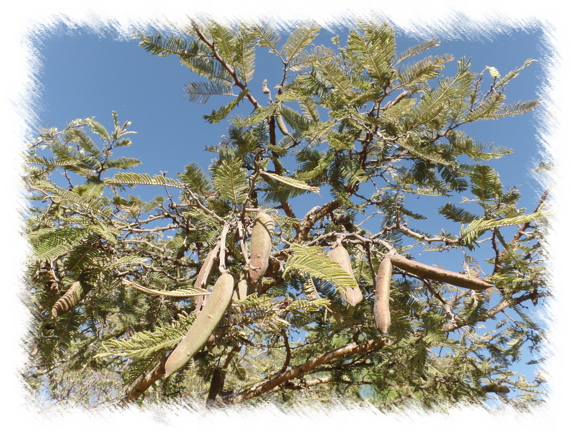 | |||
| | ||||
GUAMÚCHIL | ||||
| Pithecellobium dulce. Mart
Family: Leguminosae The term "guamaras" is used to refer to the fruit. Mature trees are usually 5 to 22 m tall, with a short trunk 30 to 75 cm in diameter at chest height; a wide and scattered cup, and a bark usually smooth and light gray. The thin, languid twigs have bipinnate composite leaves with four oblong leaflets and in most specimens paired spines can be found at the base of the leaves. In Mexico, it is common to find fruits for sale in the markets of the towns for their sweet and fleshy arils, which are eaten raw. | 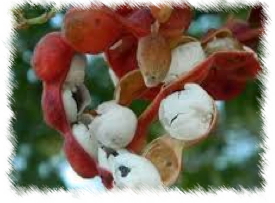 | |||
 | Uses: Sweet Pithecellobium is recommended in the treatment of digestive disorders such as stomach pain, dysentery, constipation, indigestion, stomach discomfort in general, as well as to protect the stomach and intestines. However, it is mainly used against diarrhea. It is also used to avoid abortion, in blows, sores, sinusitis, pimples on the part of the man that passes to the woman (V. purgation). It is reported as astringent and anti-inflammatory. Francisco Hernández, in the sixteenth century referred to as: astringent, contains the dysentery and other flows. In addition, instilled in the nose drains abundantly the aqueous humours of the head. Remove worms from internal ulcers. It removes the pain of a toothache and heals incurable ulcers, fights poisons and calms the earaches. | |||
| | ||||
GENUS BURSERA | ||||
| Bursera species have been known and used in Mexico by the main Mesoamerican cultures. To this genre belong the popular 'copales' [náhuatl: copalli = incense] and 'cuajiotes' [náhuatl: quáutl = tree; xiotl = leprosy] and are part of the family Burseraceae, which also includes the genus of 'Indian incense' From the ecological point of view, the Bursera genus assumes an interesting role in the ecosystems of low deciduous forest, as they are the quantitatively most important and dominant elements. | ||||
THE COPAL | ||||
| Genus Bursera Family: Burseraceae In Mexico and some Central American countries, an aromatic resin used as an incense is known as copal. Copal resin is obtained from trees or shrubs, also called copales, classified by botanists within the Bursera genus, which belongs to the family Burseraceae, a family of plants that produce oils and aromatic resins that have been valued by humanity since antiquity to elaborate incense, perfumes and remedies. In Mexico there are just over 100 different species of Bursera. The copal receives different names according to the species and the region, for example, it is known as virgin copal, copal santo, tecomaca and almárciga, among other names. The minimum size is decided from the thickness of the trunk, which generally must be greater than 10 cm in diameter, that is, about 30 cm in circumference on the trunk, measured at chest height. | ||||
THE LINÀLOE | ||||
| Bursera linanoe Family: Burseraceae The lináloe is a tree that grows in the low deciduous forest, its wood is used in the elaboration of crafts and its fruit in the extraction of oil. According to the researcher Dolores Vargas Àlvarez, from the Autonomous University of Guerrero (UAG), there are several studies that point to multiple biological applications that make it a promising tree for health, food and biological control of pests in crops, among other uses. One of the most famous copales, since for many years it has been appreciated for the delicious aroma of its essential oil, present throughout the tree, but especially in its wood, its resin and its fruits. (The essential oil from the wood has a lemon scent). |  | |||
| To obtain lináloe essential oil (although it is possible to apply it to some other copales species), it is necessary to collect "bola", that is, ripe fruit. Then it is necessary to separate with a sieve the skin of the seeds, which are little red balls. The essential oil is in the shell, so this is the raw material that is used during the distillation. In this way, the seeds can be saved and sown later if desired. | ||||
| | ||||
THE POCHOTE | ||||
| Family: Malvaceae Trees up to 15 m high, monopoly, the trunk thin, generally low, armed with strong spines, conical, the extended crown, young branches with numerous spines, glabrous or almost glabrous. Leaves arranged spirally, fingered-compound, stipulated, with 6 to 8 leaflets up to 10 cm long x 3.5 wide, acuminate or acuminate-cuspidated, almost glabrous, the midrib finely tomentose on both surfaces, to a greater extent in the lower, jagged margin or occasionally entire. Terminal inflorescence, solitary or paired flowers; actinomorphic, with 5 yellow petals up to 18 cm long, campanulate calyx with golden-brown hairs covering the entire outer surface, slightly tomentose (fuzzy) on the inside. Ellipsoid fruit, up to 23.5 cm long and 8.7 cm wide, 5-valved, acuminate, brownish, smooth, glabrous, the persistent calyx; slightly rounded seeds, dark brown, 8.5 to 9 mm long and approximately 7.5 cm wide, embedded in abundant and soft white silky fiber. | 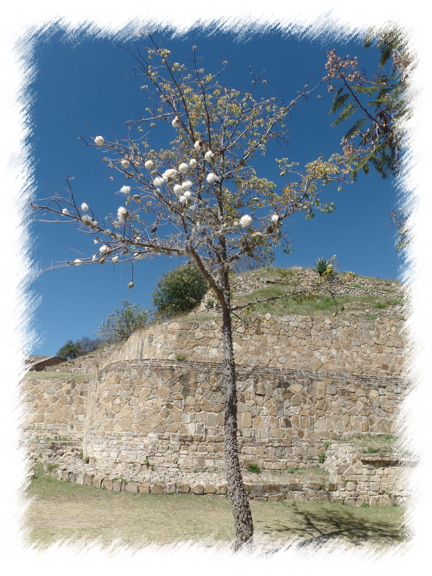 | |||
| Frequent plant in the subtropical scrub or tropical deciduous forest. Flowers from May to October, the fruits ripen from September to February. Ornamental. Uses: The silky fiber of the fruit is used as a pillow filling, sometimes it is used as a fuel, or to cure certain renal or circulatory diseases. In some places the wood of the fruits, the trunk and even the spines is used to make toys, handicrafts and turned items. This species is ornamental, meaning that its trees can be used to beautify the streets of cities. | ||||
| | ||||
THE AGAVE | ||||
| The food and drink of each region and country carry with them a universe of values, customs and ideas; that is, an entire culture. Among the rituals of Mexican food, the ritual of tequila occupies a place that is growing in importance. It is already a subject that makes people feel initiated into a special practice and knowledge and not just a drink that is consumed. From the etymological point of view, various interpretations have been assigned to the word tequila. It seems to predominate the idea that coming from Nahuatl (tequitl, work job, employment, position and tlan: place), refers to a place where a certain type of work is done or, on the other hand, "place where it is cut. | ||||
AGAVE ANGUSTIFOLIA | ||||
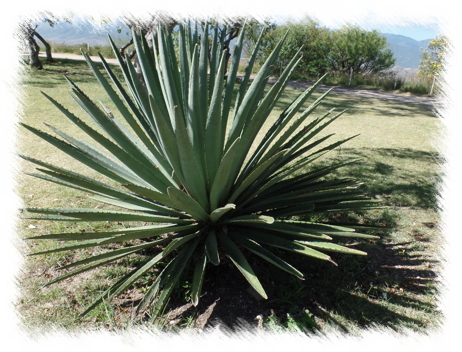 | Family: Agavaceae It is called maguey espadín, it grows individually or grouped. It has grayish toothed leaves 40 to 70 cm long by three to six wide, linear-lanceolate; with a terminal spine 1 to 4 cm long, conical and slightly grooved, reddish brown or grayish. It is a wild species of wide distribution in Oaxaca, Campeche and Yucatan, it is part of the forests of oak-pine, oak, low deciduous forest and secondary vegetation. In the Polygon of Monte Albán abounds in the forest edges where they are combined with the pasture. Uses: It is one of the most used magueyes in the state for the elaboration of mezcal; fibers are also extracted for various uses, flowers are edible and quiote is used to make fences and roofs. | |||
AGAVE KARWINSKII | ||||
| Family: Agavaceae Rosethophilous, caulescent, colonial plants; stems from 30 to 70 cm tall. Leaves lanceolate, rigid, fibrous, green-dark to greenish-yellowish, persistent along the stem, straight margin, dentate, teeth with broad base, blackish or reddish, terminal spine, conical, broad or narrowly grooved in the bundle. Pancreatic inflorescences 3 to 4 m high, green peduncle; triangular bracts. Flowers 4-5 cm long, green to yellowish; Tepals oblong, erect; stamens with filaments 3.5-4 cm long, greenish, yellowish anthers; cylindrical ovary. Capsules 4-5 cm long, 2.5-3 cm diameter, oblong, obpiriform or subglobose; black seeds. Uses: The stems of the forms managed to produce mezcal in the Central Valleys of Oaxaca reach 3 to 4 m in height; rosettes are larger and have a greater number of leaves than wild plants. It is endemic to Mexico, it is distributed only in the states of Oaxaca and Puebla. | 
| |||
MAGUEY CIRIAL | 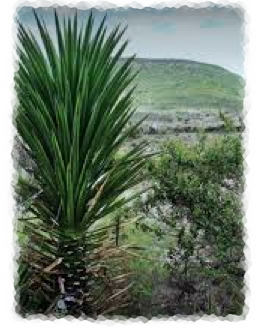
| Agave Karwinskii. Succ. Family: Agavaceae Unlike other maguey, this is a plant that grows in areas of limestone soils and little rain, where the colonies formed by suckers give shade and humidity to the smaller plants. For its trunk it is used for firewood and as a living fence in the delimitation of land; fibers are also extracted from their leaves. It is a kind of very variable aspect; They change their height or thickness, as well as the color, size and shape of their leaves. Hence, variants with different names are recognized. It is necessary to deepen our knowledge about the diversity of forms that this species presents to identify its sub-species, varieties or ecotypes. They mature between 10 and 12 years old. Common names: This species is known by several common names according to the region Cuishe, Madrecuishe, BiCuishe, Barrel, Cirial, Trip—n, Largo, Tobasiche. | ||
AGAVE SEEMANNIANA JACOBI | ||||
| Family: Agavaceae Medium-sized maguey, its leaves are green to gray-green, 27-45 cm long by 10-20 cm wide, oval to lanceolate, epidermis finely granulated, the terminal spine 4 to 6 cm long. long. Uses: The tender quiote is cut, roasted, ground, stirred with tortilla dough, put in sugar or salt and eaten. | ||||
MAGUEY TOBALA | ||||
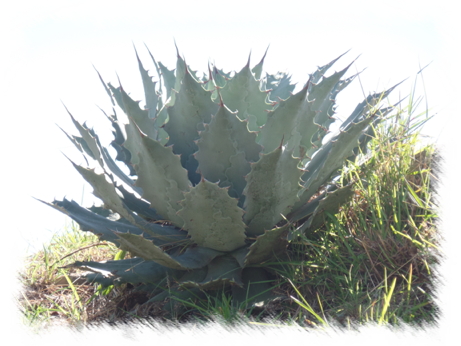 | Agave Potatorum Sp
Family: Agavaceae Agave potatorum is a species of flowering plant. small and attractive belonging to the family Agavaceae. Agave potatorum is native to the partial desert areas of Mexico, from Puebla to southern Oaxaca. Agave potatorum grows as a basal rosette with between 30 to 80 flat leaves in the shape of spatulas up to 25 cm long and with a border of short, sharp fringes, with dark thorns and ending in a needle up to 4 cm long. The leaves are silvery white, with lilac flesh with green to pink discoloration at the tips. The floral stem can be from 2.5 to 5 m long when fully developed with pale green and yellow flowers. | |||
| Tobalá is a type of maguey from which a distillate is made, "toba" means maguey and "la" means hot or aromatic, it is well known as "El Rey de los Mezcales." It is not easy to find that type of wild maguey, located in the mountains often on rocky cliffs and slopes with difficult access. In addition, it is very small and that implies that in order to produce the mescal, one will need a lot of maguey to be able to make that special drink. | ||||
| | ||||
HECTHIA PODANTHA MEZ. | ||||
| Family: Bromeliaceae Herbaceous plant up to one meter high. It forms large colonies, leaves arranged in rosette of 20 to 40 cm long, edge with brownish hooked teeth, underside covered by white scales. It blooms from May to September. | 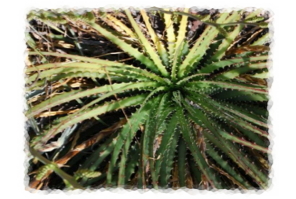 | |||
STENOCEREUS PRUINOSUS | ||||
| It is a botanical species of plants of the cactus family. We have found abandoned plantations of pitayas associated with prehispanic ruins, colonial or early twentieth century, since centuries have taken advantage of the fruits called in Mixtec "dichis" or pitayas term antilane. | ||||
 | 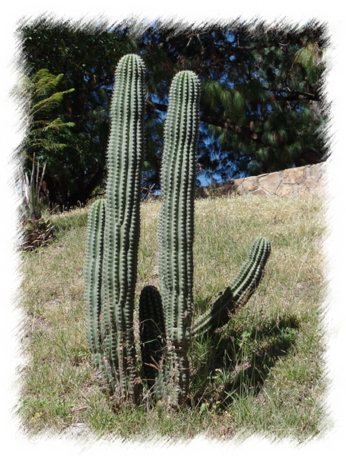
| |||
OPUNTIA TOMENTOSA SALM-DYCK | ||||
| Family: Cactaceae Arborescent plant 3-5 m high; abundant branches forming a broad cup. Articles 10-60 cm long, narrowly oval, with their narrow base, velvety surface, small areoles, with yellow glands; thorns generally absent, when there are one to three yellowish ones. Orange flowers 4-5 cm long, carmine-colored, longer than stamens, five or six lobes of stigma, yellow-pale. Red fruits, ovoid. Seeds 4 mm wide. Use: This cactus has been used for the cultivation of grana or cochineal. | 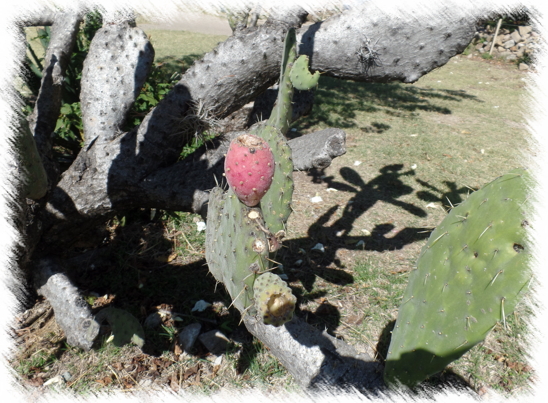 | |||
| | ||||
CANDELILLA | ||||
| Euphorbia antisyphilitica Family: Euphorbiaceae It belongs to the family Euphorbiaceae, whose members are characterized by being similar to cacti, but with the difference that they produce latex. The first person to study its properties was Zuccarini, who showed that it has healing properties against syphilis. | ||||
| The plant has long and erect grayish-green stems, with the peculiarity that on the outside produce a waxy material that serves as protection against the attack of fungi, insects and bacteria, but mainly against the extreme climate of the semi-desert . Its collection to obtain its wax is one of the most important economic activities in the northeast of the country, more specifically in the so-called Candelillera region. In the cosmetics industry, given its protective properties, candelilla wax is indispensable for a wide range of formulations used in the production of lipsticks, body creams and hair preparations. |  | |||
| For being a good plasticizer and for its capacity to retain essential oils, it favors the preservation of flavors, it is used in the manufacture of chewing gum. There are other applications that include coatings for cardboard and paper, industry of crayons, paints, wax candles, lubricants, adhesives, anticorrosives, drugs, lubricants, plastics, textiles, inks, anticorrosive, waterproofing and fireworks, etc. (SEMARNAT, 2008). Its distinctive properties give it the category of essential raw material for the manufacture of cosmetics, inks, adhesives, coatings, polishes and polishes, among others. | ||||
| | ||||
IPOMEA MURUCOIDES | ||||
| Tree up to eight meters long. Creamy gray trunk, soft but resistant wood, with milky juice. Flowers from October to April. The flowers are white-creamy and monopetaled. It is probably the tree that gives the name to Monte Albán. Uses: They are potentially trees to provide shade, besides ornamental for the beauty of their flowers. They can help control erosion. | ||||
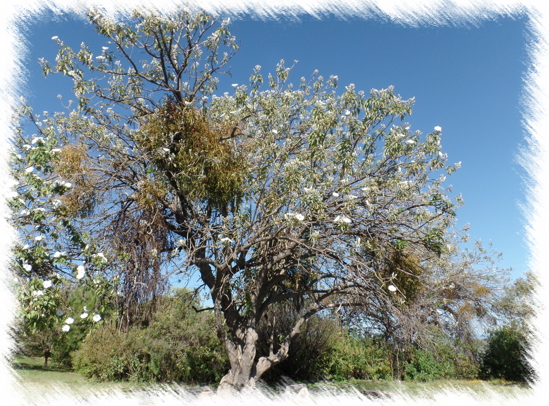 | 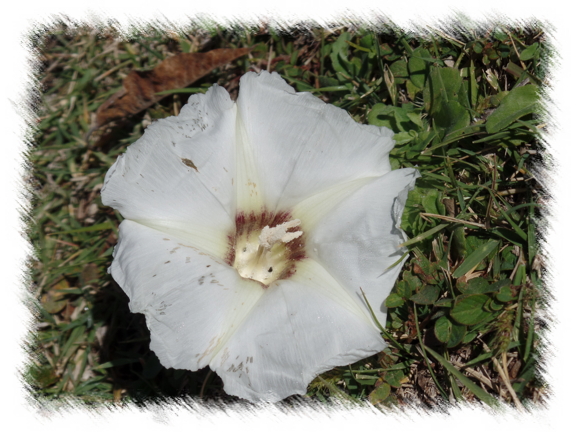
| |||
MEZQUITE | ||||
| Family: Fabaceae They usually measure between 6 and 9 m in height, although it is common to find them as shrubs. They have narrow, bipinnate, compound leaves, 5 to 7.5 cm long and with soft tips, and branches with thorns. The fruit that these trees give, in pod form, is also called mesquite. | ||||
| Uses: The rubber that exudes the trunk (amber, translucent) is similar to gum arabic and is used as glue. Gas. Firewood and coal of excellent quality. Gum is used as an adulterant to make sweets, pasta, mucilage and bitumen. It is obtained in the form of brownish tears of variable size. The resin in decoction is used to cure dysentery and for some eye conditions. The infusion of leaf decoction is used as a remedy for inflammations of the eyes. The bark as an astringent. The flowers in cooking and the bark of the root, like vomitive and laxative, to heal wounds, anthelmintic, stomach pain. | 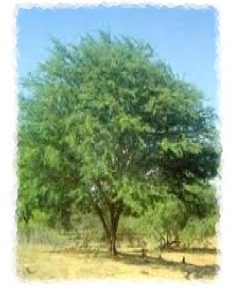
| |||
| | ||||
CONZATTIA MULTIFLORA | ||||
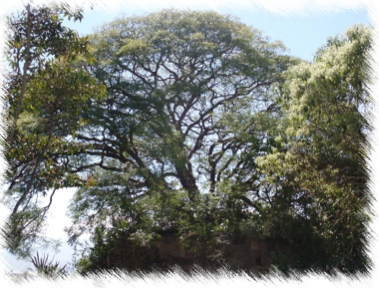 | Family: Fabaceae The trunk has a smooth, grayish-brown bark. The leaves are 20-50 cm long, with 10 to 20 pairs of pineapples and 20 to 50 leaflets, between 5 to 15 mm in length. The leaflets are apiculated and rounded on both sides. The inflorescences are 10 to 20 cm long; with yellow flowers and pedicels from 5 to 10 mm in length. The sepals are glabrous about 5 mm in length and the petals are elliptic-ovate from 7 to 10 mm in length, one of which is oblong, thickened and narrow. The petals have some red dots that could constitute nectar guides. The stamens are 6 to 9 mm in length, with subtubulated and hairy filaments near the base. The ovary is densely hairy with an elongated style. . | |||
| The fruit is a pod, dehiscent, reddish-brown, 5 to 10 cm long and 1 to 8 cm wide. The seeds are oblong and compressed, dark brown, 1 to 1.2 cm long. | ||||
| | ||||
EUPCALIPTO | ||||
| Eucaptus globosus Labill Family: Myrtaceae Tree 30 to 40 m high, fast growing, gray bark, thin, exfoliating. Evergreen The young leaves are broad, ashen, without petiole and opposite; the mature ones are long, narrow, green-bluish, curved, petiolate and alternate, about 15-25 cm long by 2-4 cm wide; All the leaves are very fragrant, with translucent glands. White flowers, chalice is subpyramidal, the corolla is a conical cap with numerous stamens. The fruit is a conical capsule that opens at the top. Uses: the leaves have an essence that in turn contains eucalyptol, a medication used for respiratory tract conditions; the decoction of the leaves is used for the same purpose. | 
| |||
| | ||||
BUGAMBILIA | ||||
| Familiy: Nyctaginaceae Climbing shrub, up to 5 meters high, woody stems, with thorns, leaves of dark green color, alternate oval rounded. Bougainvillea is a climbing plant of the family of the Nicgininaceae. It is common as a wall covering plant, lattices and pergolas, its flowers can be white, red, lilac, yellow or other colors. | ||||
 | Uses: It is used in respiratory conditions such as cough, asthma, bronchitis, flu and whooping cough, to treat the epilepsy of children, stomach pain, bad urine and acne. The infusion or tea of the leaves or flowers (bracts) are frequently used for the treatment of gastrointestinal and respiratory diseases. The decoction of the roots is used for fevers and as a laxative.
The leaves are also used to wash wounds. Antitussive, expectorant, febrifuge and purgative properties are attributed to it. | |||
| | ||||
EL NISPERO | ||||
| Eriobotrya japónica Lind. Family: Rosaceae The medlar tree is a fruit tree, provided with evergreen leaves. It presents an erect and thick trunk, although of low height, in rare occasions it exceeds 6 meters of height. It has a wide cup, rounded and at the same time conical. From the central stem they split between 2 and 5 branches and of them, the secondary ramifications. The medlar plant offers simple, alternate leaves with a woolly petiole that can reach 10 centimeters. The size of the leaves reaches 40 centimeters long by 15 wide. In the beam they are dark green and somewhat lighter on the underside. The inflorescences of the loquat are panicles 20 centimeters long, woolly in appearance and the flowers of the plant are arranged. These have a white color, small. They are honey flowers and because they are hermaphrodites, they are pollinated by insects. These plants bloom in the fall. | 
| |||
| Uses: Among the beneficial properties for health that are attributed to medlar, we will say that it is an excellent diuretic. It helps in the elimination of excess liquids in the body. The presence of carotenoids, flavonoids and ursolic acid make it a hepato-protective fruit. Recent studies have concluded that the medlar helps in the control of excess cholesterol and triglycerides. | ||||
| | ||||
PINO OAXACANA | ||||
| Pinus pseudostrobus is a species of pine also called pine lacio, pacingo and chamite, pinabete in Honduras. He is native to Mexico, Guatemala, El Salvador and Honduras where he lives in the temperate forest, at 1300-3250 m asl from 26 ° to 15 ° N. Tree with height of 8 to 25 m, and a diameter of 40 to 80 cm. The trunk is straight, free of branches between the first 4 and 6 m in height. The branches usually have horizontal location, oblong-conical buds of orange color. Its bark in young trees is smooth, it becomes rough and grayish in adult trees, near the crown the bark becomes soft and reddish in color. The foliage is dark green, the needles in groups of 5, whose size varies from 16 to 35 cm in length and from .75 to 1.25 cm in width, are extended or in the form of a pendulum, with persistent sheaths of 15 to 25 mm long. Provided with resin channels from 2 to 4. The wood is light yellow in color and has a fine texture, it is light and soft and not very resinous. Fruit. Ovoid cones to cylindrical light brown, 10 to 15 cm long and curved, these are grouped between two and three at the tips of the branch. Seeds, are small, 6 mm long, dark brown, with an articulated wing 20 to 23 mm long. | ||||
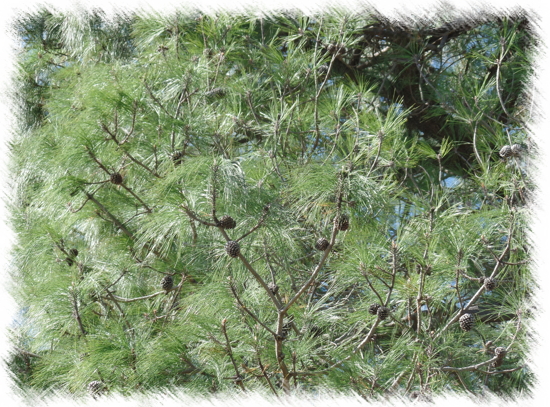 | Ecologically, this species and the conifers in general, play an important role in the ecosystems, because some of their species, particularly the pines, are dominant elements of the temperate forests. Therefore, they are considered important providers of environmental services such as atmospheric moisture collection, carbon fixation and soil retention. In addition, they are of great economic importance, mainly for its wood, resin and the different medicinal uses it has. In Puebla, they give more importance to its application in respiratory diseases such as cold or coldness and hoarseness. While in Michoac‡n they use it to clean and disinfect the eyes. To this end, grind the leaves to extract their juice and put it as eye drops. | |||
| | ||||
ESPULE | ||||
| Pinaropappus roseus Less. Compositae. Grass 20 to 30cm tall, may have few hairs. The leaves are narrow, they look blue-green and the edges sometimes have pronounced teeth. The flowers are arranged in small heads such as daisies, the flowers in the center are pink or purple and the ones on the periphery have a lighter pink tone tongue with five little dots on the tip. It lives in semi-warm and temperate climates between 1600 and 2200m asl. Wild plant, associated with crops of corn, beans and xerophilous scrub. | ||||
|
Uses: In Oaxaca and Puebla it is common the use of this plant in diseases of the skin, highlighting among them the aljorra. In Morelos, the lechita is applied to the jiotes (white spots that appear on the face and hands) and the sap in the petty. It is also used when there is constipation, for which the plant is ground or bruised and applied as a poultice in the belly and the hip. Also, it is mentioned useful in other skin conditions such as chincuale, measles and infections. It is also used to wean children, lower blood pressure or control nerves. | 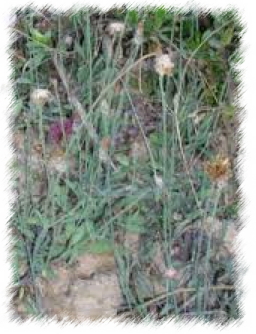
| |||
| | ||||
HIERBA DE CONEJO | ||||
| Dyssodia pinnata Family: Compositae Subarbusto or perennial grass of 30 to 45 cm of stop, something extended, with many stems starting from the base of the plant, the green parts with pubescence crinkles more or less dense. | ||||
| Plant of the family of asteraceae with oval and elongated leaves, light green, measuring 3 to 4 cm long. It is found in the region of the Central Valleys of Oaxaca and grows spontaneously during the rainy season, from August to October. There are two varieties, one with yellow flowers and the other with white flowers. In Oaxaca it is used to flavor rice, black beans and other stews. |  | |||
| Uses: As a condiment of food and cooked is swallowed to attack kidney infections. | ||||
| | ||||
GORDOLOBO | ||||
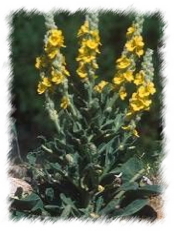 | Gnaphalium attenuatum DC. Family: Compositae An erect shrub of 30 to 80 cm high, winged stem. Leaves alternate sessile, elliptical or lanceolate, yellow flowers in small heads. Uses: As a medicinal plant against cough and sore throat, it relieves chest pain. | |||
FICUS | ||||
| ||||
| | ||||
HIGO | ||||
| Ficus goldmanii Standley Family: Moraceae The genus Ficus contains about 900 specific and infra-specific taxa accepted from trees, shrubs and climbers of the family Moraceae, a single-genus tribe Ficeae, native to the Intertropical Zone, with some of them distributed throughout the temperate regions. Most are perennial, except those that vegetate in non-tropical latitudes and areas with a long dry season. One of the characteristics of the species of this genus is the milky secretion called latex that they secrete when cut or injured. But the most characteristic is the very particular type of inflorescence that looks more like a fruit than regular flowers. Another important feature of the genus is that the terminal buds of the leaves are enclosed within a pair of stipules welded at first and then expire. These false fruits are a specially adapted structure called a psychic. They are of bulbous shape with a small opening, the ostiolo, in the apex and a hollow zone in the interior covered by small flowers. The latter are pollinated by small wasps of figs that penetrate through the opening to fertilize them, yielding tiny fruits with a hard core (achenes), commonly called nuggets, surrounded by a fleshy mesocarp; the set is the 'fig.' | ||||
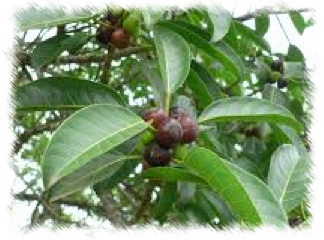 | 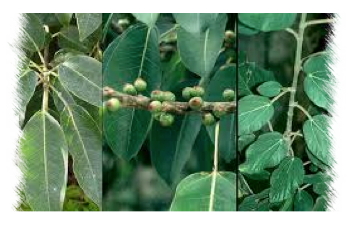
| |||
| | ||||
LAUREL, LAUREL OF INDIA, ALAMO | ||||
| Ficus retusa L. Family: Moraceae Corpulent tree, 15-25 m high. Evergreen, elliptic leaves, acute at both ends, glabrous, parallel venous on the underside, 5-10 cm long by 2-3 cm wide. Receptacle 7 or 8 mm ovoid. It spreads easily by stakes. | 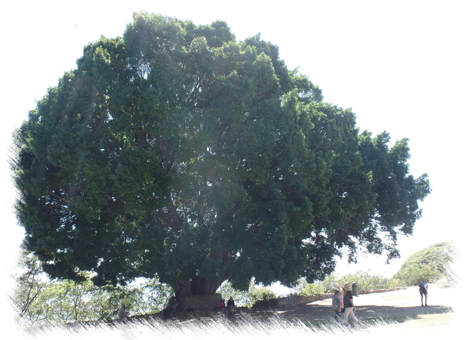 | |||
| | ||||
ENTHOGEN | ||||
| From the first contact that the Europeans had with America, a history of misunderstandings about the religious life of the native population began, which, to a great extent, lasts to this day. Judeo-Christian thought and a superb rationalism put the image of the devil before any interpretation of the cult of nature and the spirits of the ancestors who fed the lives of the inhabitants of the Antilles. In New Spain, the same thing would happen in the Antilles. The Mesoamerican pantheon complex was interpreted by the colonizers as a manifestation of the cunning deceptions of Satan, who insisted on diverting men from the path that led to the one true God. But in the new lands conquered for the Spanish Crown, plants and fungi with visionary properties multiplied. The rich entheogenic flora was used in the rituals of the great ceremonies of public worship. The rejection of visionary plants such as the ololiuqui, the peyote or the psilocybe fungi during the Viceroyalty responded to a metaphysical consideration, since these were plants with which the Evil One intended to simulate Christian communion, but there was also a sanction based on the reason and Western wisdom: the people who ingest these plants lose their reason and they go crazy, they lose their judgment. | ||||
| | ||||
THE PUMPKIN | ||||
| The pumpkin belongs to the Cucurbitaceae family, which includes genera that occur mainly in tropical areas. Cucurbitaceae include about 90 genera and 800 species that are characterized by creeping or climbing plants and by giving fruits of different sizes, colors and shapes that develop from female flowers. The genus Cucurbita, which includes pumpkins, is of American origin and is made up of 11 species, of which five are those that are grown in Mexico. | 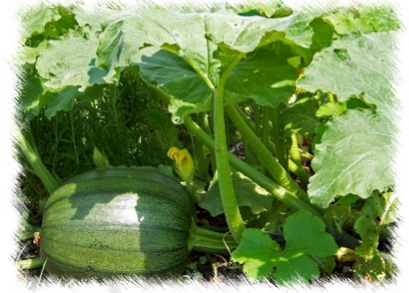
| |||
| Pumpkins are one of the cultivated species that are used in an integral way, mainly as food, although some parts such as leaves and roots are also used in traditional medicine. Of the different cucurbit species mature and tender fruits are consumed and seeds popularly known as pips, male flowers and the tender tips of the stems are used. The pips are an especially useful part because they can be stored without major problem and have characteristics that give a good nutritional level. In Mexico, flowers and tender stems are eaten, mainly from Cucurbita Angyosperma, moschata, ficifolia and pepo. | ||||
PUMPKIN | ||||
| Type: Cucúrbita pepo It is one of the first species cultivated in Mexico. It is a creeping or climbing plant that produces fruits with a wide diversity. The fruit has different forms, although the oval predominates. With rigid and hard to soft shell, it has a varied coloration that goes from light green to dark, it is basically used as food for which not only the fruit and its seeds are used, but also the flower. It is also used in traditional medicine to cure skin diseases. | ||||
PIPIANA PUMPKIN | ||||
| Type: Cucúrbita argyrosperma Usually oval in shape, rigid shell and can be completely white to dark green, with small cream motes or in contrasting green tone. It is used as food, mainly seeds, even if flowers, young stems are consumed as vegetables | ||||
CALABAZA DE CASTILLA | ||||
| Type: Cucúrbita moschata It is one of the most important and diverse pumpkin species cultivated in Mexico and the world. It is an annual, creeping or climbing plant. It presents a wide range of colors ranging from light green to dark, smooth or with cream spots, or light to dark brown, also smooth or with spots. The fruits are of very variable size and diverse forms; some are smooth, but usually with rounded ribs, is widely used as food, especially the pulp for sweets and whole or ground pips. Its different parts are used in traditional medicine to relieve various ailments, such as skin diseases and urinary tract infections. | ||||
CHILACAYOTA | ||||
 | Type: Cucurbita ficifolia Chilacayote It has a balloon or oval shape, thick shell and no ribs. Usually light green or dark with white stripes. It is used mainly as food, either as a vegetable, when immature, or to prepare sweets. | |||
| | ||||
TOMATO | ||||
| Physalis philadelphica It is both cultivated and wild. On average, the plant ranges from 15 to 60 cm in height. The fruit, generally round, can reach 6 cm in diameter, it can be yellow, green or brown. In traditional medicine some parts of the plant are used to treat conditions such as diabetes and boiled peels as an infusion for indigestion. | 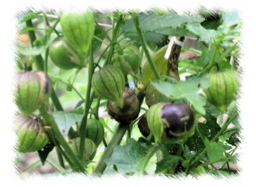 | |||
| For its consistency and its flavor, the tomato is the ideal companion of one of the favorite ingredients of the national gastronomy. Chili: Its main quality is nuanced flavors, it is clear that in addition to giving an adequate consistency to the sauces, it reduces the itching of the chili and makes it more pleasant to eat. The first country outside of Mexico that received the plant was logically Spain - the first reference to the cultivation of tomato in this country is from the late sixteenth century, and from there it was taken to other places in Europe, including Italy, without a doubt the country that, with greater enthusiasm, among other things because the environmental conditions of the Italian peninsula were favorable for its cultivation, to the point that it is the main ingredient in its gastronomy. According to data from the FAO (Food and Agriculture Organization) of the United Nations, more than one hundred million tons are produced annually in the world, a third of them in China and the United States. In Mexico production is close to three million, mostly grown in Sinaloa. | ||||
| | ||||
JITOMATE | ||||
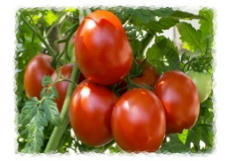 | Salanum lycopersicum It is both cultivated and wild. In general, the plant is one meter high, although it may be higher. Stem somewhat rough to the touch and erect to touch and erect to climb, the fruit when ripe becomes red, fleshy and juicy, balloon-shaped or elongated. It is mainly used as food, either processed in sauces, purees or fresh as salads. | |||
| | ||||
THE BEAN | ||||
| A plant of the genus Phaseolus, is one of the emblematic foods of Mexico. Ideal complement to corn both in its development and when it is consumed. Phaseolus vulgaris Short-lived herb, entangled in a spiral form in some support, reaching 3 m long, or erect in the form of a shrub with a height of up to 40 cm high. It produces a pod that can reach up to 20 cm long and produces seeds very characteristic and a wide variety of colors. It is used primarily as a food, both the immature pod (the green bean) and the dry seed. In addition to home cooking it is common to find them packaged in different presentations. | ||||
EJOTE | ||||
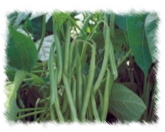 | Phaseolus It is the fruit of the bean plant that is harvested when it is still green and is used as food. The pod that is harvested when it is about 10 cm long is green, with the seeds undeveloped and with fragile texture. The green beans, once cooked, are used as vegetables and are ingredients of a wide variety of dishes. | |||
| | ||||
CHILI | ||||
| Anatomy of chili The leaves of the chili plant are also edible. They can be part of the sauces or added whole during the cooking of some stews. Then they are removed because it is only to give flavor. Matrix or placenta and veins The highest concentration of capsaicin in the chili fruit is found in the womb or the placenta, the veins and the body. The matrix is in the interior, generally in the thickest part of the chili and close to the tail. The veins are a series of ducts that start from the matrix and are distributed radially along the inner walls of the chili, going towards the tip. | ||||

| ||||
|
| ||||
